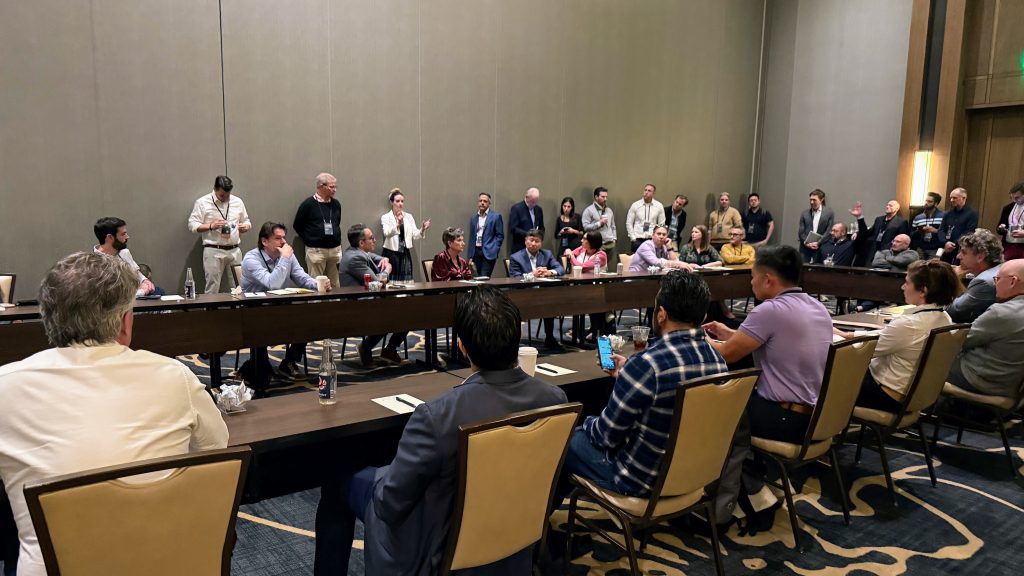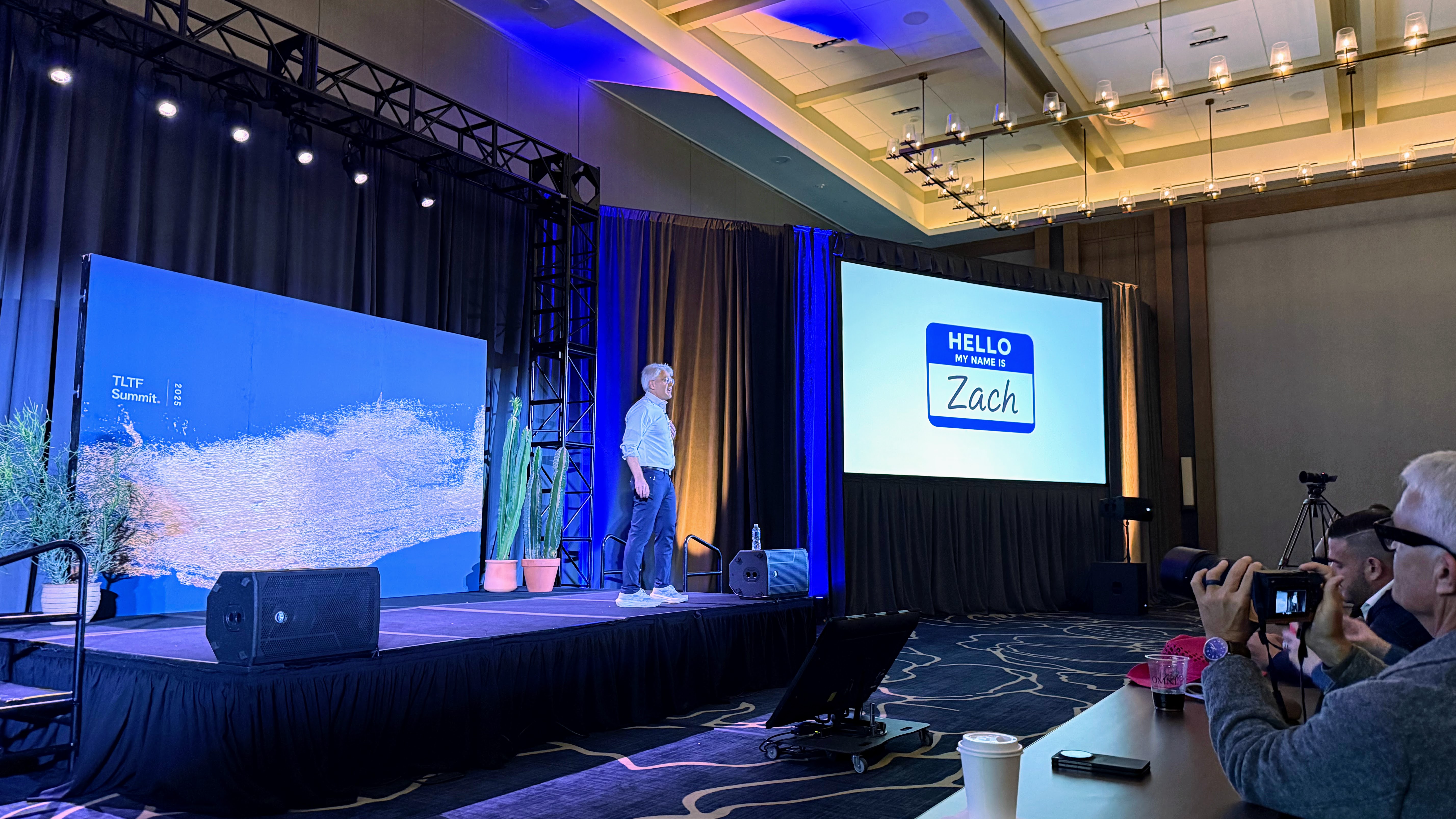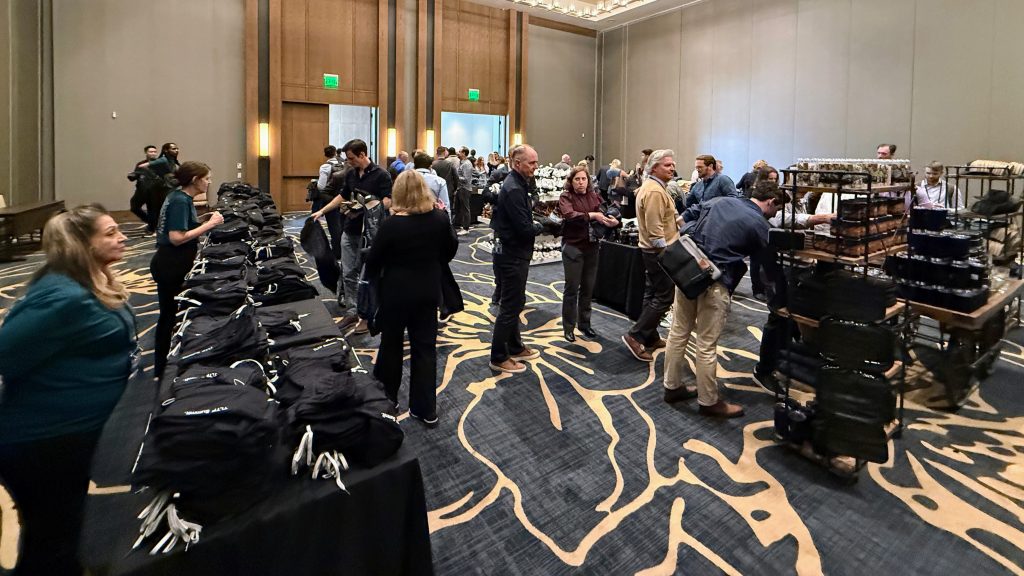God forbid a disaster had befallen Austin, Texas, last week, because it could have set back the evolution of legal tech by at least a decade. Assembled there were many of the best and the brightest of the legal tech world, who had all come together for the fourth edition of what has become the must-attend event for legal tech innovators, entrepreneurs and investors – the TLTF Summit.
Produced by The Legaltech Fund, the first venture capital firm devoted exclusively to legal tech, it is a conference I previously dubbed the Davos of legal tech for the fact that it brings together leaders from across disciplines to engage in open and unfettered dialogue about the state and future of legal innovation. As someone who has attended all four summits, I’ve had a front-row seat to its evolution.
Unique to this conference is its mix of people. It is invitation only, and TLTF staff literally call and interview everyone who applies to ensure the right fit. It is also sales free – no exhibitors or salespeople. To encourage open dialogue, the summit operates under the Chatham House Rule, by which participants are free to use the information they receive, but not to reveal the identify or affiliation of any speaker or participant.

Kristen Sonday, founder and CEO of Paladin, and Ryan Alshak, founder and CEO of Laurel, enjoy some Texas barbecue during an after-hours party.
This formula adds up to a conference attended by a who’s who of legal tech: investors from venture capital and private equity firms, CEOs and top executives from legal tech companies, managing partners and innovation leaders from some of the largest – and some of the most innovative – law firms in the world, founders of companies ranging from early-stage startups to established leaders, and lawyers and legal professionals who are at the leading edge innovation.
In his keynote to open this year’s summit, organizer Zach Posner, cofounder and managing director of The LegalTech Fund, did as he had done in past years, inviting attendees to skip the sessions in favor of spending time and taking walks with acquaintances new and old. Again this year, as he had before, he encouraged attendees to make “who luck” happen, conjuring a concept conceived by business author Jim Collins.
As I walked the hallways and grounds of the Omni Barton Creek Resort and asked attendees their impression of the summit, superlatives abounded. The best conference in legal tech. No other conference creates such a sense of community. I feel safe here, knowing I won’t be accosted by sales pitches. An unparalleled mix of attendees. The best swag. The best food. Fantastic location.
These were all paraphrases of comments I heard repeatedly. And remember, these are people, for the most part, who attend more than their fair share of conferences. So they know of what they speak.
But as the summit has quadrupled in size over its four years, I also heard many return attendees express concern that some of that “who luck” was getting lost to the question of “Who’s here?”, exacerbated by name badges with tiny type and the lack of an attendee roster. More on that later.
A Focus On AI
If superlatives characterized the conference, AI characterized its theme.
In an ironic twist of fate, the first TLTF Summit, held in Miami Dec. 7-9, 2022, convened just days after the Nov. 30, 2022, launch of ChatGPT. Now, four years later, this gathering in the Austin hill country seemed to confirm how far we have come. Legal tech, it seemed last week, is no longer feeling its way toward an AI-driven future – it has arrived at one.
As I mingling with founders, law firm leaders, corporate counsel, investors and others, the mood felt strikingly unified. Everyone, from the earliest-stage startups to the industry’s largest players, seemed to be working on some version of the same mandate, that of how to operationalize AI in legal work, not as a novelty, but as infrastructure.
Not to mention how to do it responsibly, at scale, and with the end user squarely in focus.
This was reflected in the summit’s eight programming tracks, 15 panels, 15 roundtables, seven education sessions, and hundreds of companies represented.

The managing partners of Morgan Lewis (left) and Seyfarth (right) and the former managing partner of Skadden (center) offered a rare candid look at how BigLaw’s leaders are navigating AI adoption.
For example, the panel “Leadership & Technology in Law,” featuring the managing partners of Morgan Lewis and Seyfarth and the former managing partner of Skadden, offered a rare candid look at how BigLaw’s leaders are navigating AI adoption, pricing transformations and clients’ demands for greater value.
Another panel, the “AI Effect on Law Firm Economics,” considered the economic case, that AI is simultaneously undermining and reinventing the billable hour, enabling fixed-fee and subscription models, and offering firms the data visibility they’ve always lacked.
“AI Is My Co-Counsel” brought together Microsoft, Google, Warburg Pincus, Streamline AI and Clearbrief to dissect what is working in corporate legal departments – and where hallucinations, data protection, and explainability still pose real barriers.

Natalie Knowlton, associate director of legal innovation at Stanford University (in white coat against wall), moderated a roundtable on the future of nonlawyer ownership.
Meanwhile, in “Unlocking Collaboration: Interoperability in Legal AI,” speakers from Meta, Cityblock Health, HSF Kramer, Harbor, and Legaltech Hub made the case for interoperability, arguing that the next leap in AI won’t come from smarter models, but from better systems that talk to each other.
One of the most talked-about panels, “Who Controls the Future of Legal Services?”, captured the tension and opportunity in the shifting ownership of the “legal services stack,” as ABS models, MSOs, and AI-driven platforms challenge traditional firm structures.
The Next Wave of Legal AI
A signature feature of the summit is its Startup Showcase, which this year introduced 17 early-stage companies spanning such areas as AI-native litigation platforms (TrialKit), contract intelligence (Syntracts), structured data extraction (LexSelect), patent automation (Paximal, Patlytics), in-house copilots (Ruli), compliance infrastructure (SurePath AI), and conversational AI (Querious).
Cumulatively, their presentations reflected several of the key themes currently dominating the legal tech landscape:
- Agentic AI: Not just answering questions, but performing tasks (Paximal, Newcode.ai, Lead Autopilot).
- Data structuring: Turning messy PDFs into usable data, enabling AI accuracy at scale (LexSelect, Syntracts).
- Vertical AI platforms: Built specifically for injury claims, immigration, private markets or patents (Predict.law, CaseBlink, Covenant, Patlytics).
- AI-first infrastructure: Governing AI usage, mitigating risk, and automating compliance (SurePath AI, Warrant).
In addition to startups, the summit also highlighted scale-stage and growth-track companies.
The 15 scale stage presenters, described as companies “that are scaling rapidly and redefining the legaltech landscape, included: DraftWise, FirmPilot, Flo Recruit, Foundation AI, HelloPrenup, Hona, Jigsaw, Jusfy, Lawline, New Era ADR, Orbital, SimpleClosure, SimplyAgree, StructureFlow and Vertican.
Meanwhile, the growth track featured nine companies that have achieved substantial growth “and long surpassed product-market fit: BlackCloak, Bridge Legal, Centerbase, Harvey, LegalOn, Scalar, Smokeball, Steno, and Trust & Will.
Lowering the ‘Who Luck’ Odds
But even for all of its substance, much of the TLTF Summit’s value still comes from its format – from the serendipity of its “who luck.”
Yet among those who had attended this conference before, I heard grumbling over its growth. The first year was capped at a relatively intimate 250 registrants (and Posner said in his keynote that the actual attendance had been around 150). Last year was supposed to have been capped at 500 but actually reached around 650. This year, total registrants reached 876.
By the standards of large legal tech conferences such as Legalweek and ILTACON, the TLTF Summit is still small. But by the standard of making “who luck” happen, this year’s larger attendance meant a lowering of the odds.
In my review of last year’s summit, I wrote, “Without question, the defining trait of this summit is its atmosphere of engagement, discovery and serendipity.”
That is still a true statement. But, somehow, it felt less true this year. There was less of that serendipity and spontaneity. This is not just me talking. I heard it over and over again from others who had attended in prior years.

Through sheer coincidence, at one of the standing-room-only programs, my Legaltech Week co-panelist Stephanie Wilkins, director of content at Legaltech Hub, and I found ourselves sitting on the floor directly across from each other. When Stephanie sent me the photo on the right, I responded with one of her.
One seemingly preventable side effect of this year’s larger attendance was that seminar rooms were consistently standing-room only. At virtually every program I attended, many audience members were forced to stand crowded along the walls or to plop down cross-legged on the floor.
Not only was this uncomfortable for the audience, but I heard from speakers that it was distracting for them, particularly as late arrivers jockeyed for a space.
I get it: Success brings growth and growth brings growing pains. I’ve been on the conference circuit long enough to see several conferences that started small and grew exponentially and remained successful – or became even more successful – through it all.
But there comes a point where the who-luck runs low, and the very thing that characterized the conference in its early days morphs into something much different.
‘Still the Best’
Thankfully, that has not happened yet, and my complaints about the numbers are nothing more than picking nits off an otherwise fantastic conference.
In fact, in the case of virtually every repeat attendee who grumbled to me about its growth, they would always quickly temper that comment with the postscript: But it is still the best conference in legal tech.
One of the characteristics that make it so good is its ability to maintain an atmosphere that I described last year as “chill.”
Because everyone is vetted, because everything is off the record, because no one is trying to sell you anything, participants seem unusually relaxed, unguarded, approachable and engaging.
What I wrote last year on this point remains true: “No one was too big or important to approach, or too unapproachable because they were surrounded by their people. Everyone was on equal footing, and everyone engaged as co-equal peers.”
And when who-luck did strike and you found yourself connecting with a complete stranger, the conversation was bound to be fascinating. To double-click on what I’ve already said: The people who attend the TLTF Summit are truly those who are at the vanguard of legal innovation, across a range of roles.
It is also a conference that continues to be defined by how well it handles the smaller details. Two in particular that have been true for all four years are:
- Food. It is ample and delicious. Participants are served breakfast, lunch and dinner, with a variety of both healthy and indulgent snacks seemingly always available. Menus all accommodated the vegetarians and pescatarians among us, even at an off-site BBQ party. (This pescatarian was particularly grateful.)
- Swag. I have said before and will say it again: No legal tech conference does swag like the TLTF Summit. At a designated hour, the swag room doors opened, and you would think they had announced free equity in the latest legal AI startup. Accomplished professionals swarmed the room, grabbing hoodies and sweats and hats and cups and socks and all sorts of other paraphernalia. Savvy summit veterans knew to bring extra-large suitcases to get all their goodies back home, while newbies wondered what to do with their overflowing bags.
Picking Nits
While the summit stands out for so many of its macro and micro details, I would be painting a one-sided picture if I did not also mention some of the smaller nits that I heard attendees complain about:
- The lack of an app. Ahead of the conference, TLTF circulated a summit “look book,” a 76-page PDF with extensive details about the conference. While helpful in advance as a planning tool, it was so extensive and unwieldy that it was virtually unusable as a conference guide. In fact, the cumbersomeness of the PDF inspired one enterprising attendee, Rob Saccone, chief technology officer at Lega – literally while at the airport en route to the summit – to create an AI chat interface that he made available to attendees for free. During the conference, TLTF put the agenda up on a web page, but it, also, was not user friendly, given that every time you looked at it, you had to scroll down to find your day and time. As it turns out, here is an app for that. Why not use it?
- Tiny type on name tags. The complaint I heard most often was about the tiny typeface used to show names on badges and the even tinier typeface showing affiliations. I’m guessing this was done to encourage people to engage rather than just read, and perhaps also to separate people from their affiliations. But I know many people were bothered by it.
- Lack of attendee list. With name tags unreadable, and so many people in attendance, it would have been nice to have some sort of attendee list. I understand that the organizers want everyone to feel free from pitches and solicitations, but this is already a select group, one that is already vetted in advance. Why not make it easier for attendees to follow up with each other?
Also worth noting – not as a complaint, but as information for anyone thinking of attending in the future – is that the summit’s primary focus is on BigLaw and corporate legal. As evidence of this, look no farther than the law firms represented on the speaker roster: A&O Sherman, Goodwin Procter, K&L Gates, Latham & Watkins, Ogletree Deakins, Orrick and Skadden.
I was glad to see one program on “AI and the Justice Gap,” which looked at how AI tools can help expand access to justice. I was not able to attend it, so I cannot comment on its substance. However, I was surprised to see that panel’s principal speaker as the chief operating officer of one of the world’s largest law firms.
That said, for all its focus on BigLaw and corporate legal, there is room to wonder whether “who luck” could extend to those working on the justice gap. Perhaps that is next year’s growth opportunity – not just in numbers, but in diversity of mission.
I was also glad to see several panels that looked at issues around regulatory reform, non-lawyer ownership, and the like – some of which also touched on issues of access to justice.
Creating Community
In his opening keynote, Zach Posner talked about the power of community – the power of bringing together people who are working on similar things to advance their common goals.
“If we get that right, we’re not only helping individuals achieve, but we’re helping the entire community and the entire space achieve its goals,” he said.
Later, as I happened into one of those who-luck conversations with the CEO of a major legal tech company, he used that same word, community, to describe how this conference was like no other he has attended.
The TLTF Summit is a formula that combines “who luck” with “who’s who” to create a community of like-minded leaders and thinkers and to spark three days of dialogue and engagement, all focused on the future of legal technology and legal practice.
Having attended all four summits, having watched it already quadruple in size, I am almost hesitant to publish this post. Like that Austin swimming hole the locals do not want mapped on Google, I almost wish I could keep this a secret known only to an intimate few.
That, however, would be not only selfish, but counterproductive. It would also be impossible. As the field of legal technology grows exponentially, so too will this summit.
Maybe all that who-luck won’t run out, maybe it will simply evolve and expand. The challenge for organizers is not whether to grow – that ship has sailed – but whether they can maintain the magic that made 150 people feel like they had found something special, even as they welcome hundreds more.
 Robert Ambrogi Blog
Robert Ambrogi Blog
